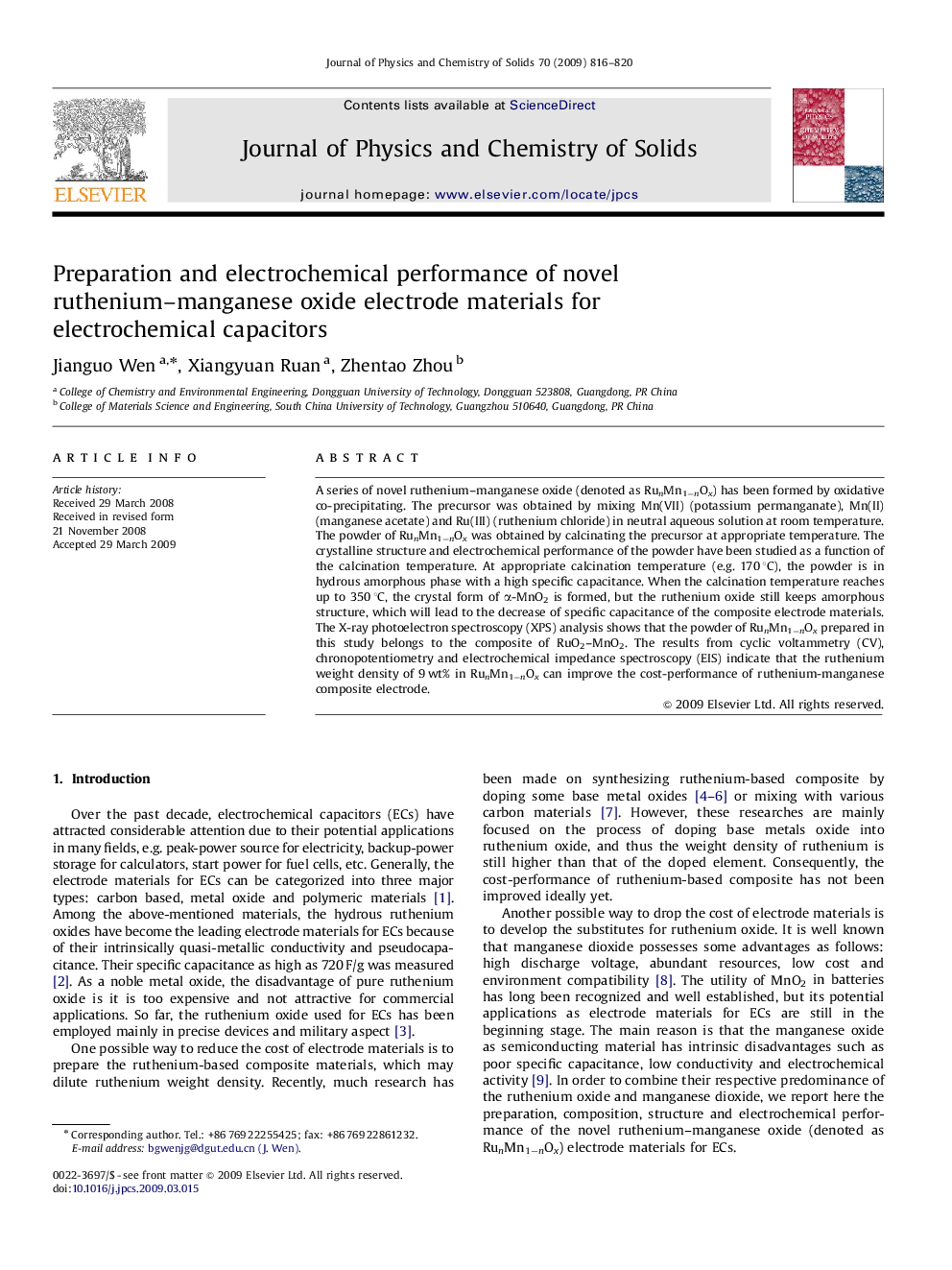| Article ID | Journal | Published Year | Pages | File Type |
|---|---|---|---|---|
| 1517904 | Journal of Physics and Chemistry of Solids | 2009 | 5 Pages |
A series of novel ruthenium–manganese oxide (denoted as RunMn1−nOx) has been formed by oxidative co-precipitating. The precursor was obtained by mixing Mn(VII) (potassium permanganate), Mn(II) (manganese acetate) and Ru(III) (ruthenium chloride) in neutral aqueous solution at room temperature. The powder of RunMn1−nOx was obtained by calcinating the precursor at appropriate temperature. The crystalline structure and electrochemical performance of the powder have been studied as a function of the calcination temperature. At appropriate calcination temperature (e.g. 170 °C), the powder is in hydrous amorphous phase with a high specific capacitance. When the calcination temperature reaches up to 350 °C, the crystal form of α-MnO2 is formed, but the ruthenium oxide still keeps amorphous structure, which will lead to the decrease of specific capacitance of the composite electrode materials. The X-ray photoelectron spectroscopy (XPS) analysis shows that the powder of RunMn1−nOx prepared in this study belongs to the composite of RuO2–MnO2. The results from cyclic voltammetry (CV), chronopotentiometry and electrochemical impedance spectroscopy (EIS) indicate that the ruthenium weight density of 9 wt% in RunMn1−nOx can improve the cost-performance of ruthenium-manganese composite electrode.
